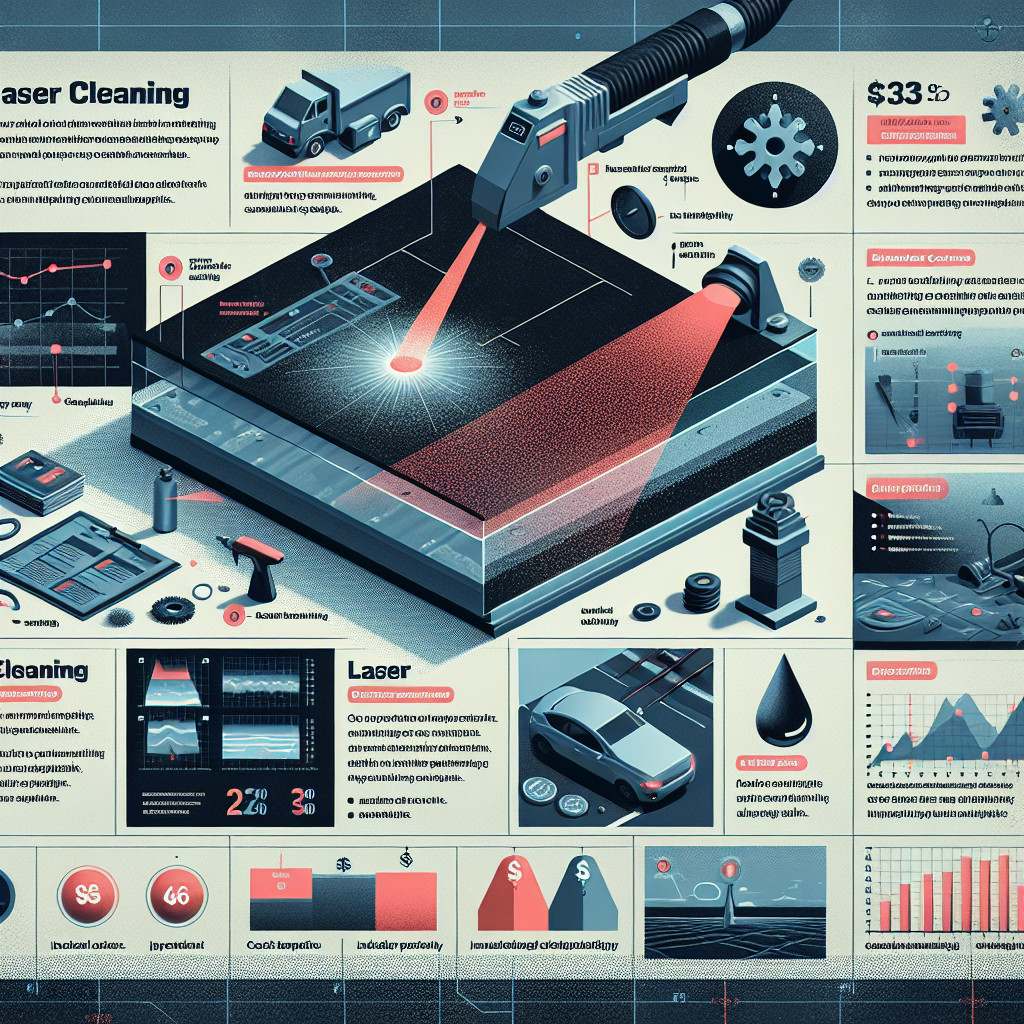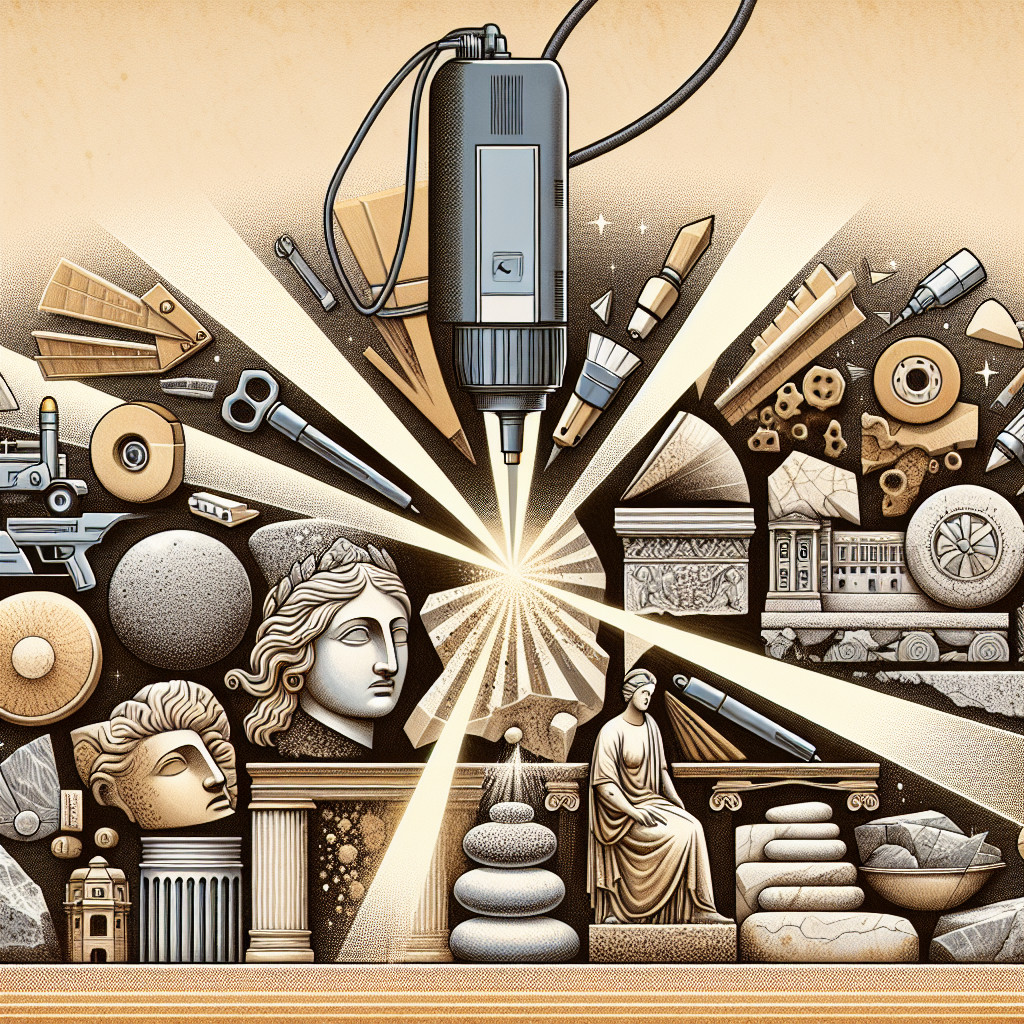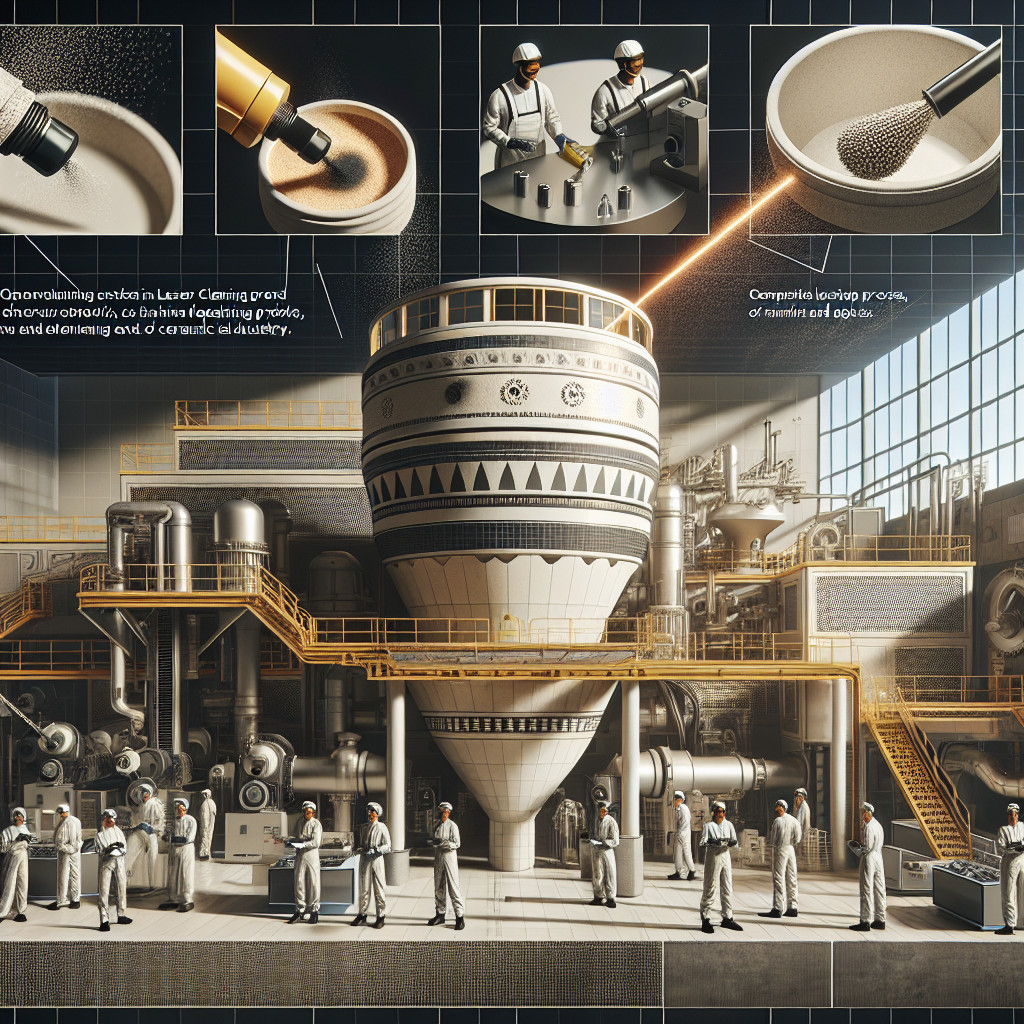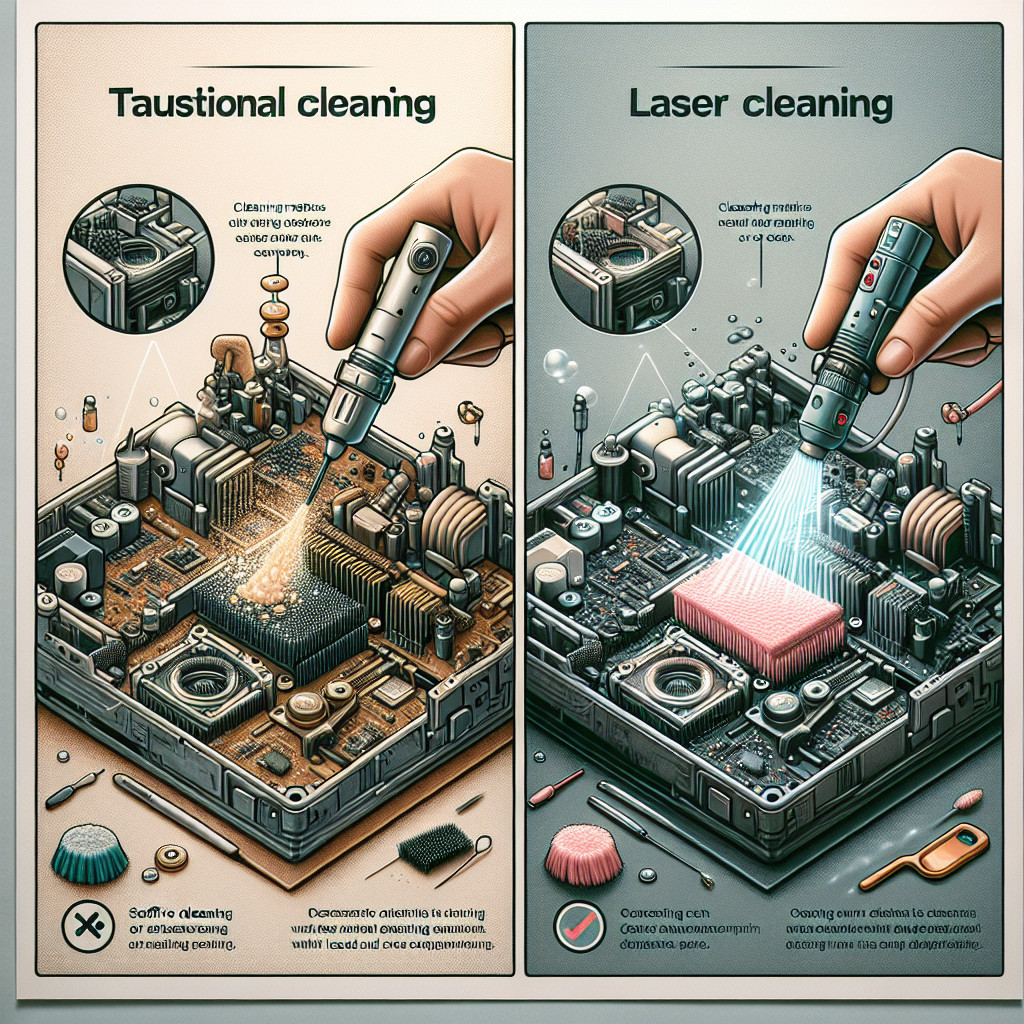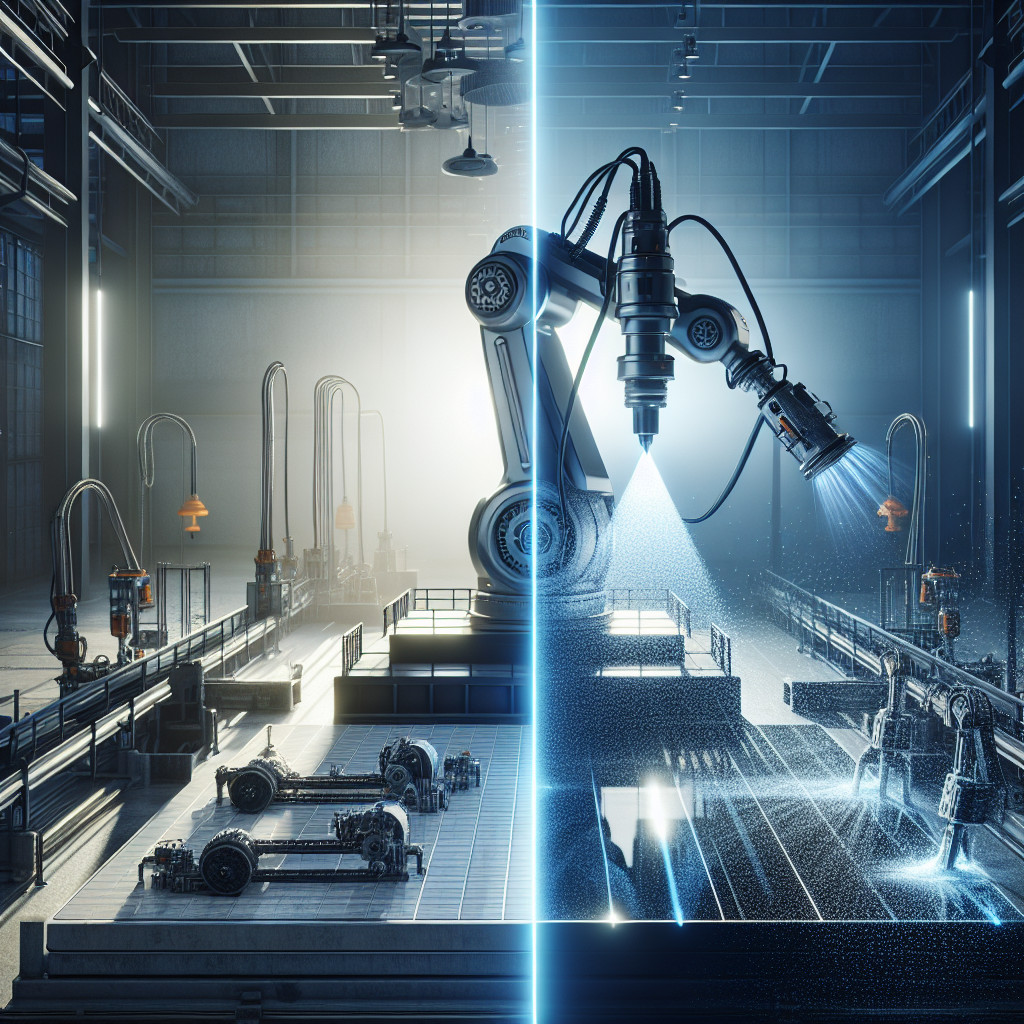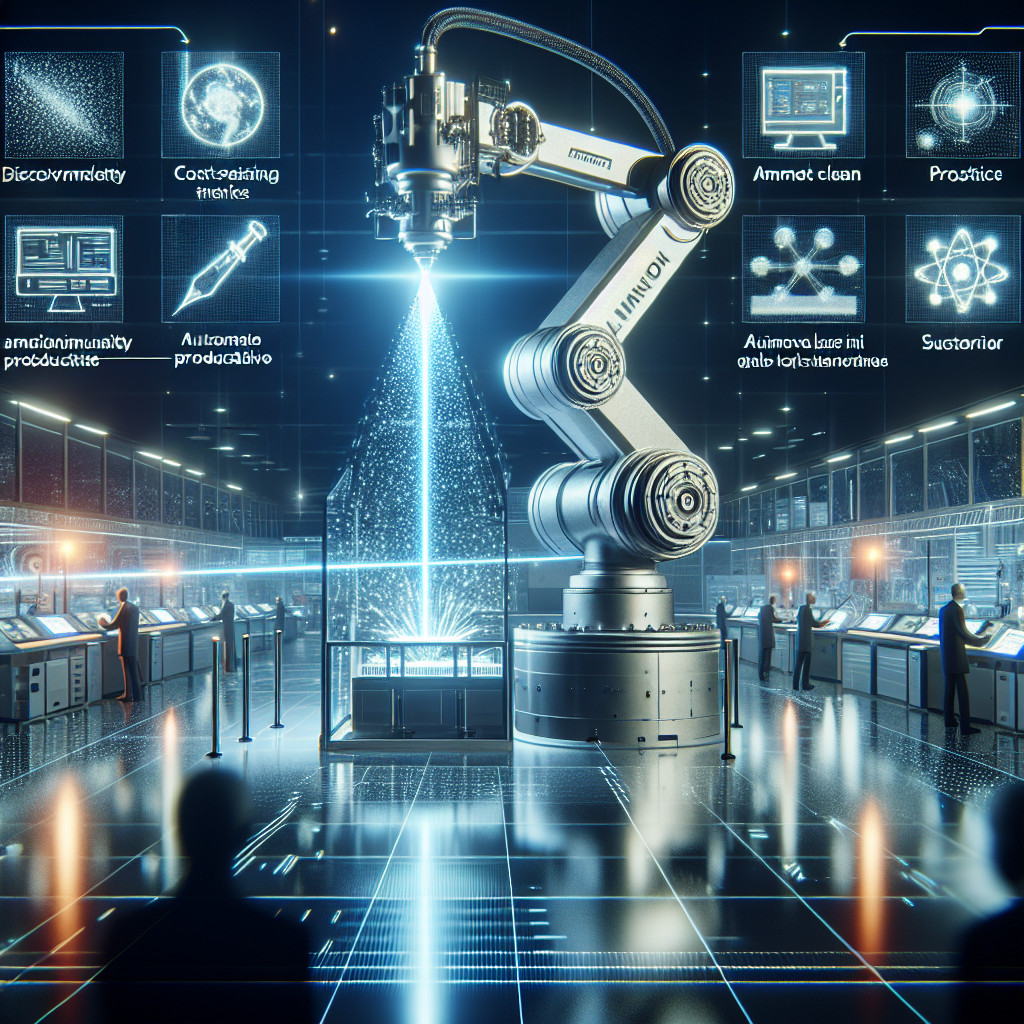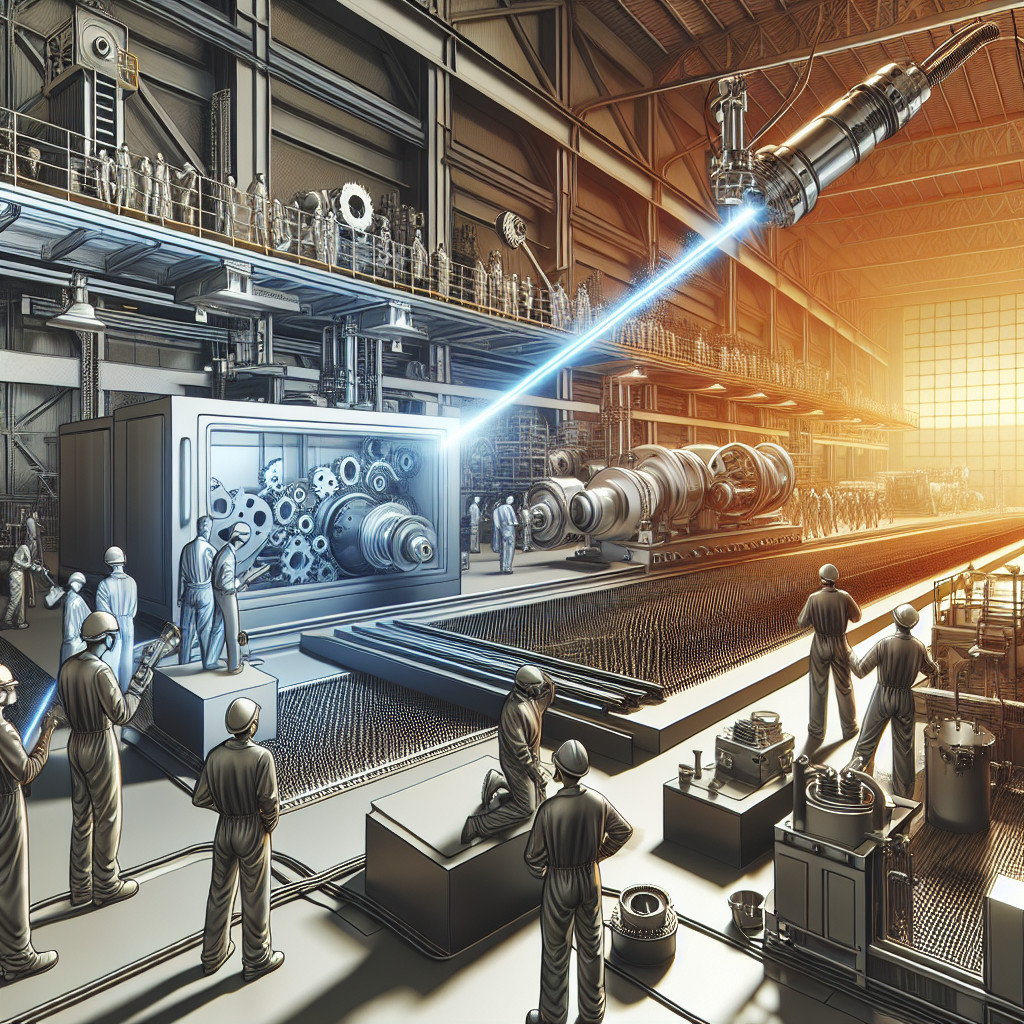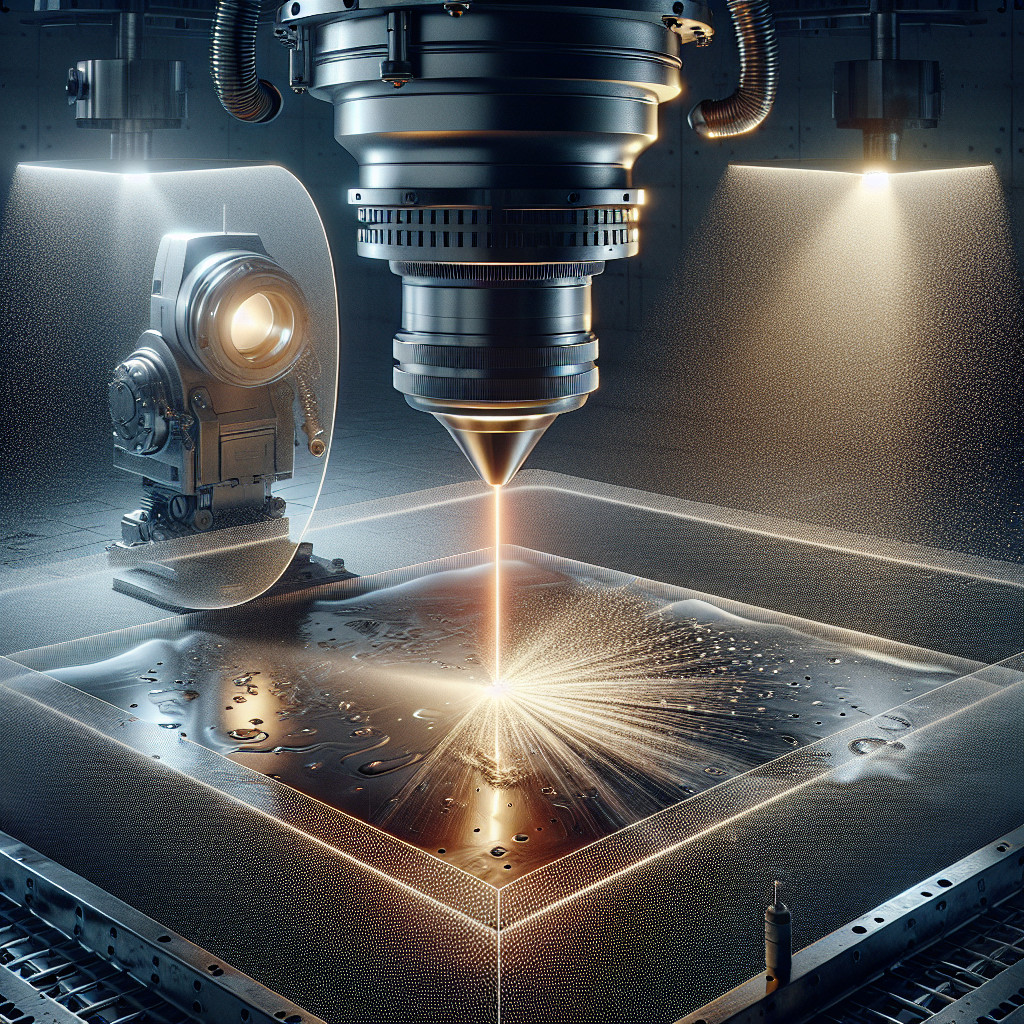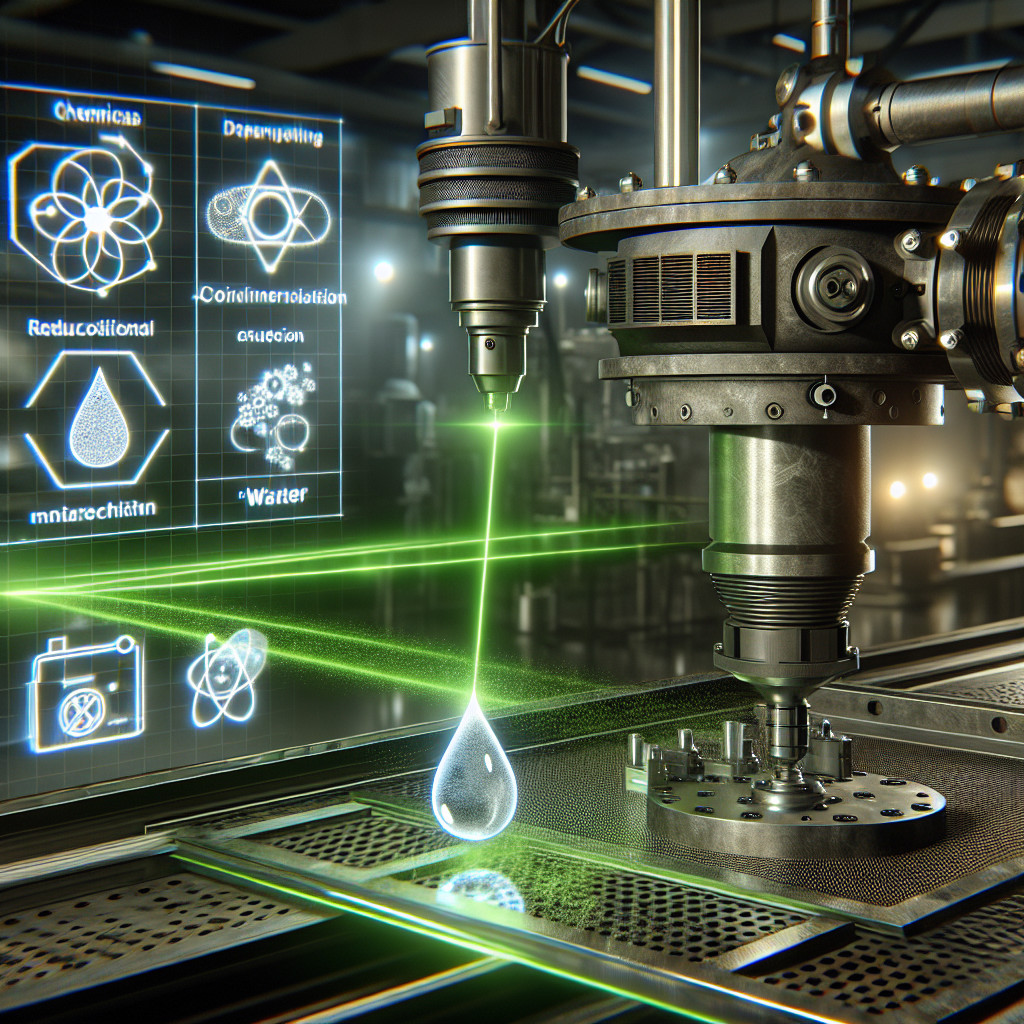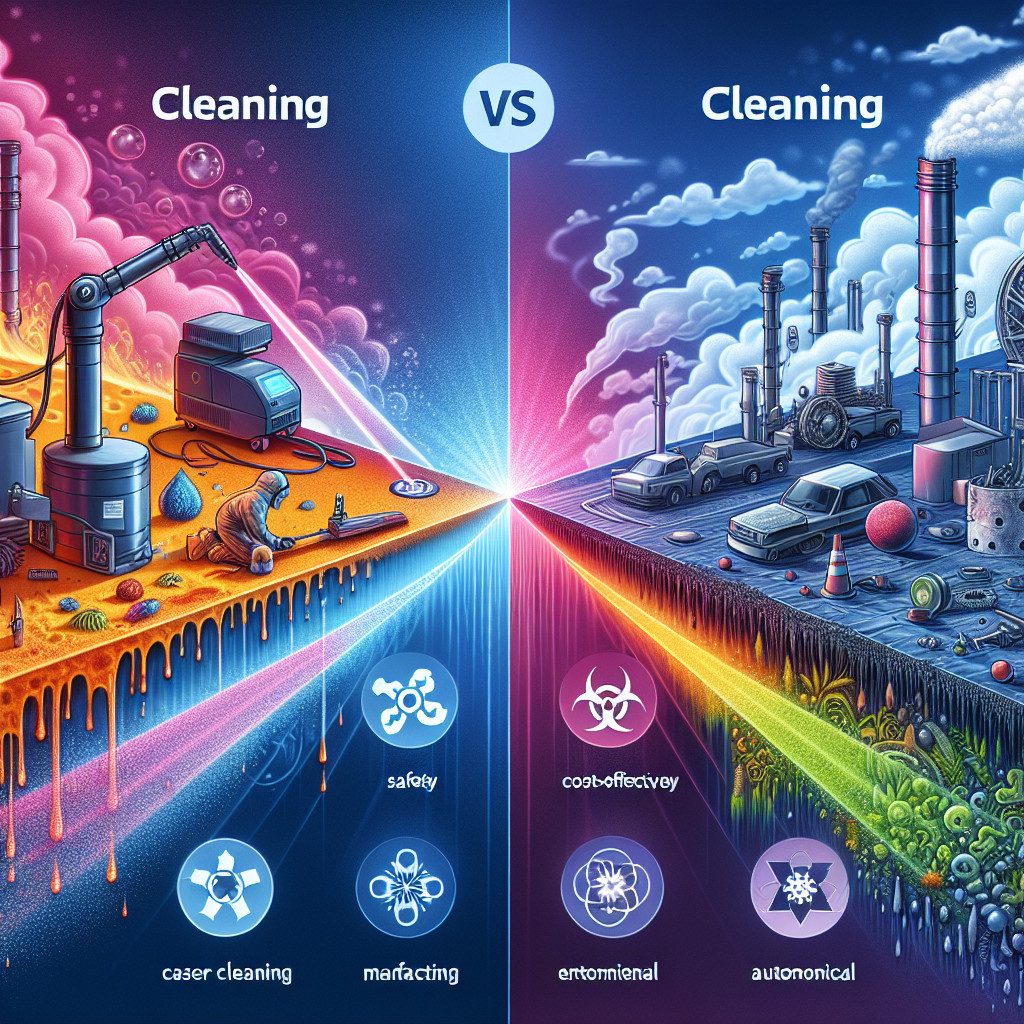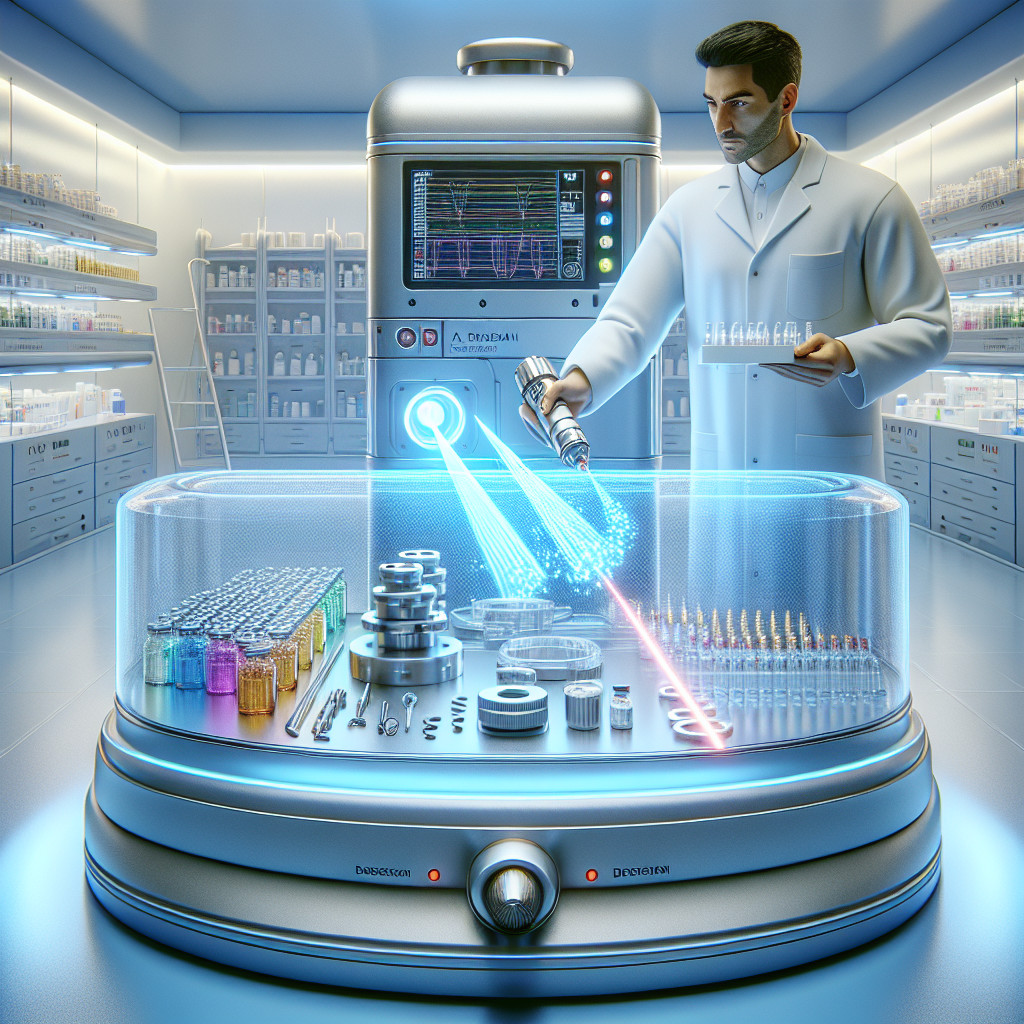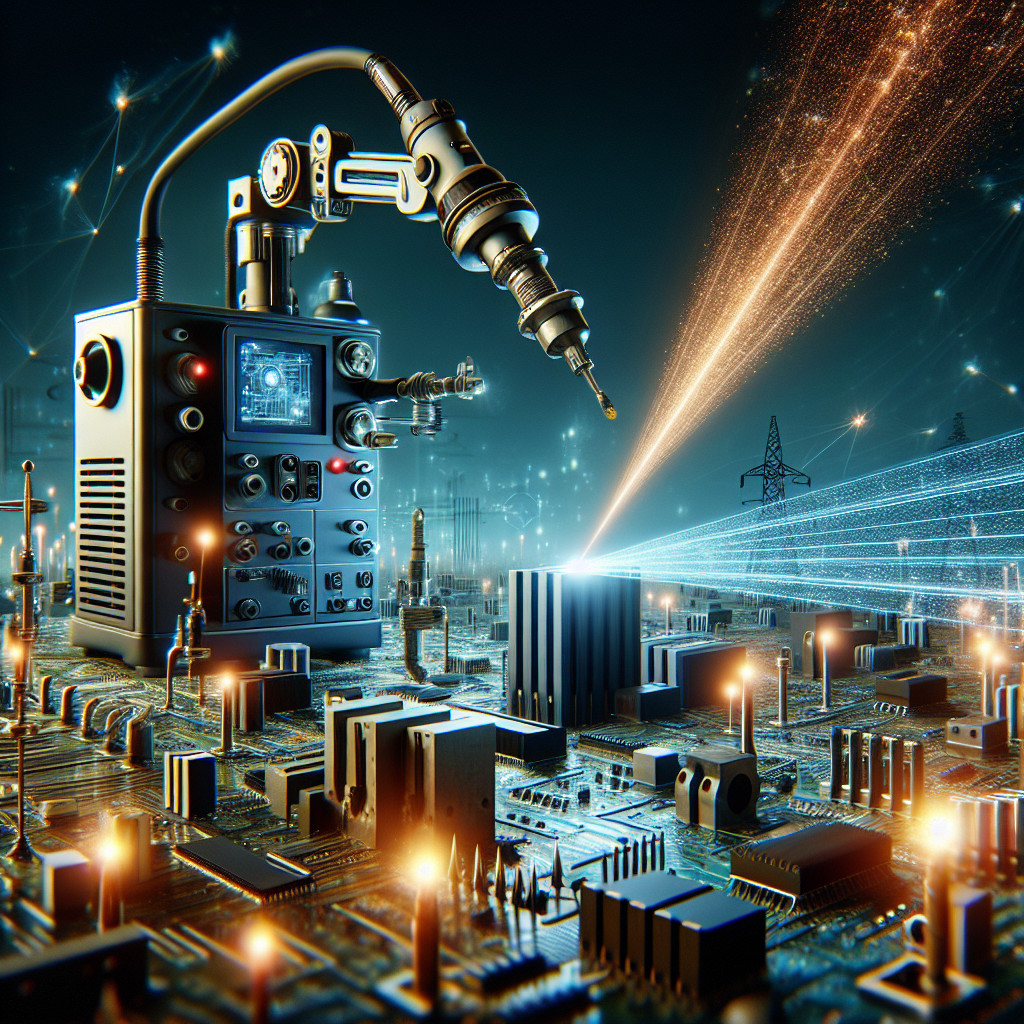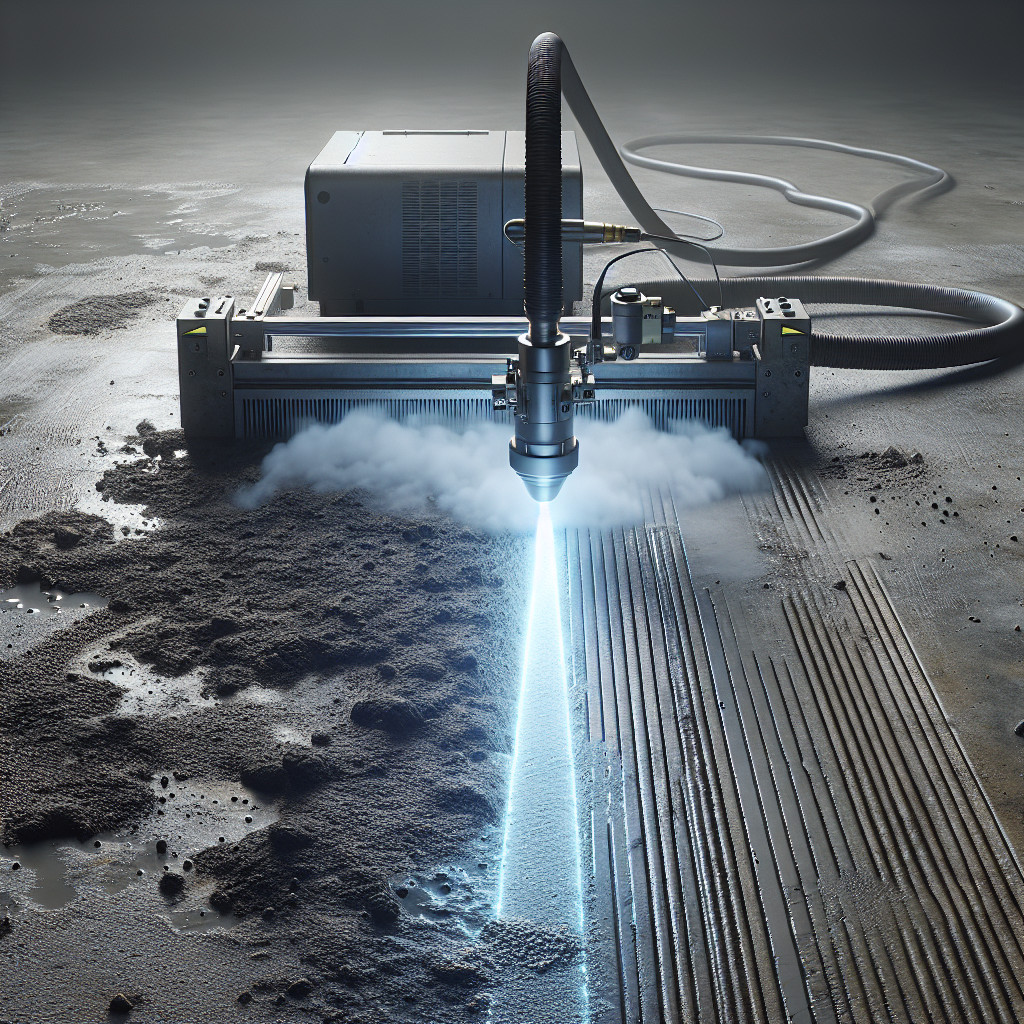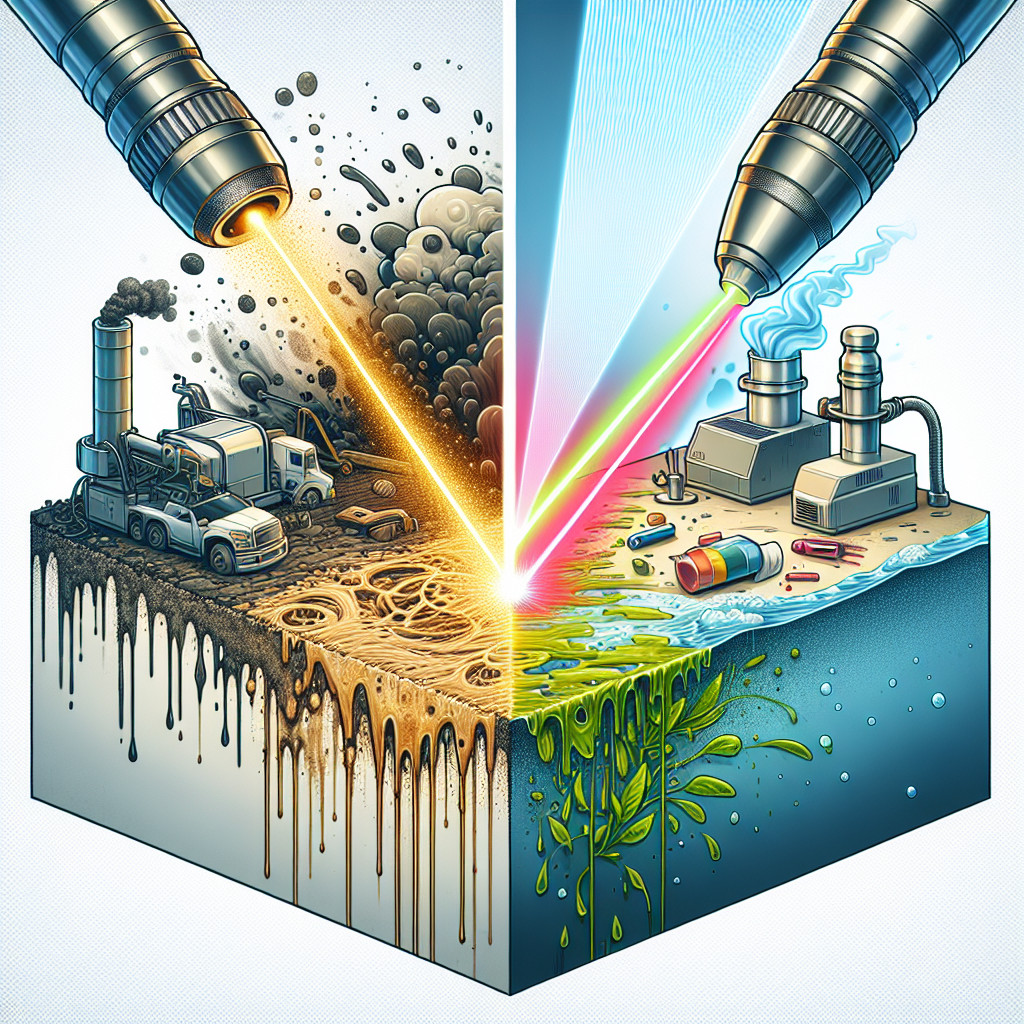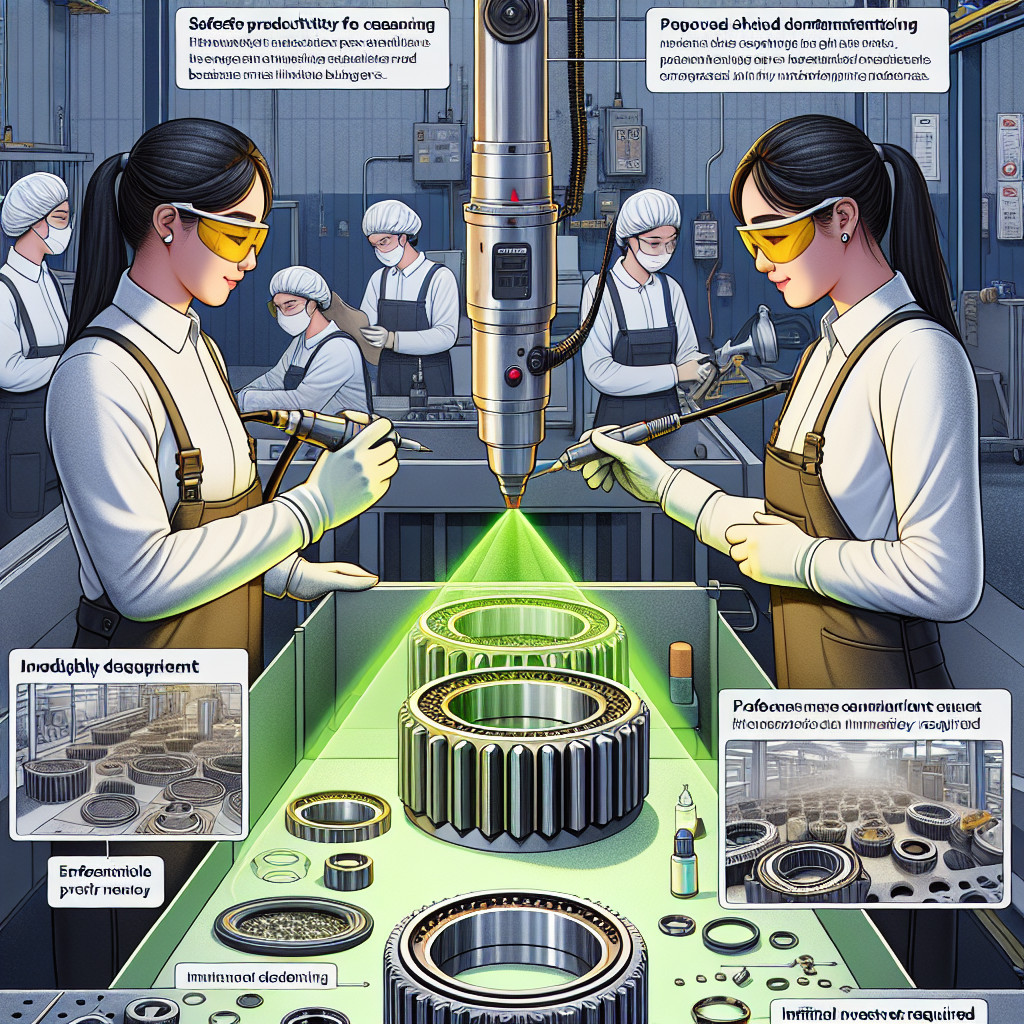Environmental benefits of laser cleaning – discussion on reducing water and detergent consumption and eliminating chemical waste
Nowadays, when environmental protection is becoming more and more important, searching for new cleaning methods that minimize the negative impact on our planet is extremely important. One such innovative technology is laser cleaning, which brings many benefits to the environment. In this article, we will discuss two main aspects of these benefits: the reduction of water and detergent consumption and the elimination of chemical waste.
The first significant aspect of the environmental benefits of laser cleaning is the significant reduction in water consumption. Traditional cleaning methods, such as high-pressure water washing, require large amounts of water to effectively remove dirt and contaminants. In the case of laser cleaning, this process takes place without the use of water, which leads to a significant reduction in the consumption of this valuable resource. Water is one of the most important elements of our ecosystem, and its excessive consumption can lead to a shortage of drinking water and negatively affect aquatic ecosystems. Therefore, reducing water consumption is extremely important for environmental protection.
Another aspect of the environmental benefits of laser cleaning is the elimination of the need for detergents. Traditional cleaning methods often require the use of strong chemical detergents that can be harmful to the environment. These chemicals can leach into soil and groundwater, causing pollution and harming living organisms. Laser cleaning does not require the use of detergents because the laser energy is sufficient to remove dirt and contaminants. Eliminating detergents helps reduce the amount of chemicals released into the environment, which has a positive impact on our planet.
The final aspect of the environmental benefits of laser cleaning is the elimination of chemical waste. Traditional cleaning methods often generate chemical waste, such as used detergents, which must be disposed of properly. This waste can be difficult to dispose of and may pose a threat to the environment if not disposed of properly. Laser cleaning does not generate chemical waste because it does not require the use of detergents or other chemicals. This elimination of chemical waste helps reduce the burden on the environment and minimizes the risk of contamination.
To sum up, laser cleaning has many benefits for the environment. Reducing water and detergent consumption and eliminating chemical waste are key aspects of these benefits. With laser cleaning, we can reduce our impact on the environment by minimizing water consumption, eliminating harmful chemicals and reducing waste generation. This is an innovative technology that can play an important role in protecting our planet.
Keywords: laser cleaning, environmental benefits, reduction of water consumption, elimination of detergents, elimination of chemical waste.
Keywords: laser cleaning and environmental protection, laser cleaning and reduction of water consumption, laser cleaning and elimination of detergents, laser cleaning and elimination of chemical waste, environmental benefits of laser cleaning.
Increasing the efficiency and productivity of your manufacturing processes with laser cleaning – presenting how laser cleaning can speed up and improve various industrial processes
In today’s dynamic industrial world, where time is a precious resource, any innovation that can speed up and improve production processes is extremely valuable. One such innovation is laser cleaning, which is becoming more and more popular in various industrial sectors. Laser cleaning is a process in which concentrated laser beams are used to remove contaminants, surface layers or other unwanted substances from various materials. This technology offers many benefits, including increasing the efficiency and productivity of production processes.
One of the main ways laser cleaning speeds up industrial processes is its ability to quickly and effectively remove contaminants. Traditional cleaning methods such as scrubbing, sandblasting or chemicals can be time-consuming and labor-intensive. Laser cleaning eliminates these problems because the laser can precisely direct the beam at contaminants and remove them directly from the surface of the material. This saves time and increases the efficiency of the production process.
Another way laser cleaning speeds up industrial processes is its ability to remove hard-to-reach contaminants. In some cases, traditional cleaning methods may be insufficient because they cannot reach hard-to-reach areas. Laser cleaning can effectively remove contaminants from hard-to-reach places such as narrow gaps, surface irregularities and internal channels. Thanks to this, production processes can be more comprehensive and accurate, which translates into increased efficiency and productivity.
Additionally, laser cleaning can also speed up industrial processes by minimizing machine downtime. In traditional cleaning methods, it is often necessary to turn off machinery and equipment to perform cleaning. This leads to production downtime and wasted time. Laser cleaning can be performed on operating machines, minimizing downtime and allowing production to continue. Thanks to this, production processes are more continuous and effective.
Laser cleaning can also speed up industrial processes by increasing the durability and quality of products. Contaminants and surface layers can affect the quality and durability of products. Laser cleaning removes these unwanted substances, leading to improved product quality and durability. Thanks to this, the products are more competitive on the market and can bring higher profits.
Conclusions:
Laser cleaning is an innovative technology that can speed up and improve various industrial processes. With its ability to quickly and effectively remove contaminants, remove hard-to-reach contaminants, minimize machine downtime, and improve product quality and durability, laser cleaning is becoming an extremely valuable tool for the industry. Keywords: laser cleaning, effectiveness, efficiency, production processes, contamination, hard-to-reach places, machine downtime, product quality.
Keywords: increasing the efficiency of production processes thanks to laser cleaning, improving industrial processes through laser cleaning, benefits of laser cleaning in production processes, laser cleaning as a tool to increase efficiency, laser cleaning and minimizing machine downtime, improving the quality and durability of products thanks to laser cleaning.
Improving the quality and durability of laser-cleaned surfaces – discussion of how laser cleaning can remove contaminants and deposits that can affect the quality and durability of surfaces
Nowadays, maintaining high quality and durability of surfaces is extremely important in many areas, such as industry, medicine and science. Contaminants and deposits that accumulate on surfaces can lead to various problems such as corrosion, material degradation and loss of functionality. Therefore, finding effective methods for cleaning surfaces is extremely important.
One of the modern and effective methods of cleaning surfaces is laser cleaning. This innovative technology uses a laser beam to remove dirt and deposits from various materials. This process involves directing a laser beam at the surface to be cleaned. The laser energy evaporates or flakes off contaminants, leaving the surface clean and undamaged.
Laser cleaning has many advantages over traditional cleaning methods. Firstly, it is a non-invasive method that does not require the use of any chemical cleaning agents. Thanks to this, there is no risk of damaging the surface or leaving cleaning residues. Moreover, laser cleaning is very precise and controlled, which allows only removal of contaminants without disturbing the structure of the material.
Laser cleaning is also very effective in removing various types of dirt and deposits. It can be used to remove paint, rust, oil, grease, dust and even protective coatings. Thanks to this, it can be used in many industries, such as the automotive, aviation, electronics and food industries. Removing these contaminants is not only aesthetic, but also affects the quality and durability of the surface.
Surface quality and durability are crucial for many aspects. For example, in the automotive industry, clean and undamaged surfaces are essential to ensure the safety and efficiency of vehicles. In medicine, clean surfaces are essential to avoid infection and ensure hygiene. In life sciences, clean surfaces are essential for precise measurements and experiments. Therefore, laser cleaning can make a huge difference for these areas.
It is also worth mentioning the durability of the surface. Pollutants and deposits that accumulate on surfaces can lead to the degradation of materials and shorten their service life. For example, corrosion can lead to damage to metal surfaces, which in turn can lead to breakdowns and costly repairs. Therefore, removing these contaminants is crucial to maintaining the durability of the surface.
The conclusion is that laser cleaning is an effective and innovative method of removing contaminants and deposits from surfaces. Thanks to its precision and non-invasiveness, it can be used in many areas to improve the quality and durability of surfaces. This is not only aesthetic, but also important for the safety, performance and durability of various materials.
Keywords: laser cleaning, contamination, deposits, surface quality, surface durability, precision, control, safety, efficiency, durability, corrosion, material degradation.
Key phrases: effective removal of contaminants and deposits, innovative method of cleaning surfaces, laser cleaning as a non-invasive method, precise and controlled removal of contaminants, impact on the quality and durability of surfaces, laser cleaning in various areas, aesthetic and functional aspects of laser cleaning, the importance of surface durability in various industries.
Occupational health and safety with laser cleaning – presenting the benefits for workers, such as eliminating the need to use hazardous chemicals and reducing the risks associated with manual cleaning
Traditional cleaning methods, such as hand scrubbing, using chemicals and other tools, can be not only time-consuming, but also dangerous for workers. They often require the use of strong detergents that can be harmful to health and the environment. Moreover, manual cleaning can lead to injuries such as cuts, abrasions and burns.
Laser cleaning is an innovative method that allows you to effectively and safely remove contaminants from various surfaces. The laser uses a high-energy light beam that is directed at the surface to be cleaned. Light energy causes evaporation or degreasing of contaminants, without the need to use chemicals.
One of the greatest benefits of laser cleaning to workers is the elimination of the need to use hazardous chemicals. Employees no longer have to inhale toxic fumes or come into contact with harmful substances, which significantly improves their safety and health. Additionally, eliminating chemicals reduces the risk of allergies, skin irritations and other health problems associated with their use.
Another benefit for workers is the reduced risk associated with manual cleaning. Manual cleaning can be dangerous, especially when cleaning hard-to-reach places, high surfaces or high-power devices. Employees may be at risk of falling, falling or being injured while performing these activities. Laser cleaning eliminates these risks because the employee does not have to come into direct contact with the surface and the entire process takes place from a safe distance.
Additionally, laser cleaning is more effective and precise than traditional cleaning methods. The laser is able to remove even the most difficult contaminants, such as paint, oil or rust, without damaging the substrate. As a result, surfaces are cleaner and more hygienic, which translates into better working conditions.
It is also worth noting that laser cleaning is more ecological. It does not require the use of chemicals that may pollute the natural environment. In addition, the laser cleaning process is more energy-efficient than traditional methods, which helps to reduce energy consumption.
To sum up, laser cleaning has many benefits for employees. It eliminates the need to use hazardous chemicals, reduces the risks associated with manual cleaning, improves cleaning efficiency and precision, and is more ecological. Thanks to this, employees can feel safer and healthier in their workplace.
Keywords: occupational safety, occupational hygiene, laser cleaning, chemicals, risk, manual cleaning, efficiency, precision, ecology.
Keywords: eliminating the need to use hazardous chemicals, reducing the risk associated with manual cleaning, effective and safe removal of contaminants, elimination of toxic fumes, reducing the risk of allergies and skin irritations, safe cleaning of hard-to-reach places, effective and precise removal of contaminants, cleaner and more hygienic surfaces, ecological cleaning, safe and healthy working conditions.
Save time and costs with laser cleaning – discuss how laser cleaning can reduce the time needed to clean and reduce maintenance and cleaning costs
Cleaning is an integral part of maintaining cleanliness and hygiene in various areas of life. Regardless of whether we are dealing with industry, medicine or everyday household activities, it is necessary to regularly remove dirt, dust and other contaminants. Traditional cleaning methods such as brushes, sponges or chemicals can be time-consuming and expensive. However, thanks to modern laser technology, the cleaning process can be much more effective and economical.
Laser cleaning is an innovative method that uses a laser beam to remove dirt from various surfaces. It works by directing light energy onto the surface, which causes the dirt to evaporate or flake off. Unlike traditional methods, laser cleaning does not require the use of any chemicals or mechanical tools. So it is not only more ecological, but also safer for the user.
One of the main benefits of laser cleaning is time saving. Traditional cleaning methods can be time-consuming, especially when dealing with large surfaces or hard-to-reach places. Laser technology allows for quick and effective removal of contaminants, without the need for a long and tedious cleaning process. Thanks to this, employees can save time and focus on other important tasks.
Another benefit is the reduction of maintenance and cleaning costs. Traditional cleaning methods often require the purchase of specialized tools, chemicals and other materials. Moreover, it is also necessary to replenish these supplies regularly. Laser cleaning eliminates the need to use such products, which leads to significant financial savings. Additionally, by reducing the time needed for cleaning, you can reduce the costs associated with remunerating employees for the time spent on these activities.
Laser cleaning is used in many areas. In industry, it can be used to clean machines, tools, mechanical elements and metal surfaces. In medicine, laser cleaning can be used to disinfect medical equipment, surgical instruments and surfaces in hospitals. At home, it can be used to clean furniture, carpets, upholstery and other surfaces.
The conclusion is that laser cleaning is an innovative and effective method that can significantly reduce the time needed for cleaning and reduce the costs associated with maintenance and cleaning. Thanks to this, companies can save time and money and at the same time maintain a high level of cleanliness and hygiene. Laser cleaning is the future of cleaning and brings many benefits to both companies and users.
Keywords: time saving, cost saving, laser cleaning, time reduction, cost reduction, maintenance, cleaning.
Keywords: laser cleaning in industry, laser cleaning in medicine, laser cleaning at home, effective laser cleaning, time savings with laser cleaning, cost savings with laser cleaning.
The use of laser cleaning in various industries – presenting specific examples of the use of laser cleaning in the automotive, aerospace, medical, electronics industries, etc.
Laser cleaning is a modern method of removing dirt, rust, paint, oil and other substances from various surfaces. It uses light energy concentrated in a laser beam that is directed at the area to be cleansed. This technology has been used in many industries, including automotive, aerospace, medical, electronics and many others.
In the automotive industry, laser cleaning is widely used to remove rust and paint from car bodies. Traditional cleaning methods such as sandblasting can damage the surface, while laser cleaning is more precise and does not damage the metal. Additionally, laser cleaning can also be used to remove contaminants from engines, exhaust systems and other car parts.
In the aerospace industry, laser cleaning is used to clean engines, wings, leading edges and other surfaces of aircraft. This method is particularly useful when removing paint from surfaces, as traditional methods can damage delicate structural elements. Laser cleaning is also used to remove contaminants from fuel and hydraulic systems, helping to improve flight performance and safety.
In the medical industry, laser cleaning is used to clean surgical instruments, endoscopes, implants and other medical devices. This method is not only effective in removing contaminants, but also eliminates the risk of infection because the laser is sterilizing. Additionally, laser cleaning can be used to remove tattoos, scars and other skin defects.
In the electronics industry, laser cleaning is used to clean the surfaces of printed circuit boards, integrated circuits, electronic housings and other electronic components. This method is especially useful for removing contaminants that may affect the operation of electronic devices. Laser cleaning is also used to remove solder, making it easier to repair and maintain electronic devices.
In addition to the industries mentioned above, laser cleaning is used in many other areas. For example, in the food industry it can be used to clean molds for food production, and in the textile industry to remove paints and other substances from fabrics. Additionally, laser cleaning can be used in the glass industry to remove contaminants from glass surfaces, and in the energy industry to clean solar panels.
Keywords: laser cleaning, automotive industry, aerospace industry, medical industry, electronics industry, rust, paint, pollution, precision, sterilization, repair, maintenance, food industry, textile industry, glass industry, energy industry.
Keywords: application of laser cleaning in the automotive industry, application of laser cleaning in the aerospace industry, application of laser cleaning in the medical industry, application of laser cleaning in the electronics industry, laser cleaning in the food industry, laser cleaning in the textile industry, laser cleaning in the glass industry, cleaning laser in the energy industry.
- Laser cleaning and long-term cost savings – cost analysis - February 29, 2024
- Laser cleaning and reducing emissions of harmful substances - February 28, 2024
- Can laser cleaning be used in veterinary medicine? - February 28, 2024



